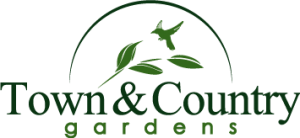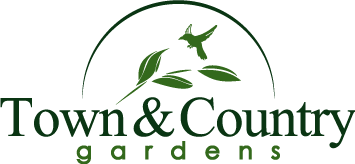Preparing Soil in Late Winter and Early Spring for a Thriving Summer Garden
Preparing Soil in Late Winter and Early Spring for a Thriving Summer Garden
As winter begins to fade and the promise of warmer days approaches, gardeners know that preparing the soil is one of the most crucial steps in ensuring a productive summer garden. Late winter and early spring are the ideal times to assess, amend, and revitalize your garden soil to provide the perfect foundation for healthy plants. Proper soil preparation can improve plant health, increase yields, and reduce pest and disease problems throughout the growing season.
If you want to set your garden up for success, now is the time to start preparing your soil. Whether you’re an experienced gardener or just beginning your gardening journey, this guide will walk you through everything you need to know about preparing soil for summer gardening.
Why Soil Preparation is Crucial for Summer Gardening
Healthy soil is the key to a thriving garden. The quality of your soil affects nutrient availability, water retention, drainage, and root development. By taking the time to prepare soil in late winter and early spring, you’ll create the perfect growing environment for summer vegetables, flowers, and herbs.
Step 1: Assessing Your Garden Soil
Before you begin, take time to evaluate the current state of your soil. Here are a few ways to do this:
- Soil Texture Test: Pick up a handful of soil and squeeze it. If it crumbles easily, you have well-balanced loam soil. If it stays in a hard lump, it may contain too much clay. If it falls apart too quickly, it may be too sandy.
- Drainage Check: Dig a hole about a foot deep and fill it with water. If the water drains too quickly, your soil may need more organic matter to improve moisture retention. If it drains too slowly, it may have compacted clay.
- Soil pH Test: Using a soil testing kit or taking a sample to a garden center like Town and Country Gardens, determine whether your soil is too acidic or alkaline. Most plants prefer a slightly acidic to neutral pH (around 6.0-7.0).
Step 2: Clearing Debris and Weeds
Late winter and early spring are the perfect times to clear out last year’s garden debris. Remove dead plants, weeds, and any leftover mulch to prevent pests and diseases from overwintering in your garden. This will create a clean slate for spring planting.
Step 3: Adding Organic Matter to Improve Soil Health
Organic matter is essential for preparing soil for summer gardening. Adding compost, aged manure, or leaf mold will help improve soil structure, retain moisture, and increase microbial activity.
- Compost: A nutrient-rich soil amendment that enhances soil fertility and encourages healthy root growth.
- Aged Manure: A natural fertilizer that boosts nitrogen levels and enhances soil texture.
- Leaf Mold: Decomposed leaves that help improve soil aeration and moisture retention.
For the best results, mix organic matter into the top 6-8 inches of soil using a garden fork or tiller.
Step 4: Loosening and Aerating the Soil
Winter can leave soil compacted, making it difficult for roots to penetrate. Use a garden fork, broadfork, or tiller to loosen the soil. This helps aerate the soil, improving drainage and allowing oxygen to reach plant roots.
If your soil is heavy with clay, consider adding sand, perlite, or gypsum to improve drainage. If it’s too sandy, adding more organic matter will help it retain moisture and nutrients.
Step 5: Choosing the Right Soil Amendments
Depending on your soil test results, you may need to add specific amendments to improve fertility.
- Lime: Raises soil pH if your soil is too acidic.
- Sulfur: Lowers soil pH if your soil is too alkaline.
- Bone Meal: Provides phosphorus for root development.
- Blood Meal: Adds nitrogen for leafy plant growth.
- Epsom Salt: Supplies magnesium, which helps plants absorb nutrients.
Step 6: Using Cover Crops and Mulch
Cover crops like winter rye or clover can be tilled into the soil to add organic matter and suppress weeds. If you planted cover crops in the fall, early spring is the time to turn them under so they can decompose before planting.
Applying a layer of mulch will help retain moisture, suppress weeds, and regulate soil temperature. Straw, shredded leaves, or bark mulch are all excellent choices for spring gardens.
Step 7: Preparing Raised Beds and Containers
If you use raised garden beds or container gardening, now is the time to refresh the soil. Remove old soil, mix in compost, and add fresh potting mix to replenish nutrients.
At Town and Country Gardens, you can find high-quality garden soil, compost, and soil amendments to revitalize your raised beds and containers.
Step 8: Planning and Rotating Crops
Crop rotation helps prevent soil depletion and reduces the risk of disease buildup. Avoid planting the same vegetables in the same spot year after year.
For example:
- Rotate legumes (peas, beans) with heavy feeders like tomatoes and peppers.
- Follow root crops (carrots, beets) with leafy greens (lettuce, kale) to maintain soil health.
If you’re unsure about crop rotation, visit Town and Country Gardens for expert advice on garden planning!
Step 9: Installing Drip Irrigation and Watering Systems
Late winter and early spring are great times to install or check your irrigation system. A drip irrigation system conserves water by delivering moisture directly to plant roots, reducing evaporation and water waste.
If using a sprinkler system, test it for any leaks or clogs before the growing season starts.
Step 10: Starting Seeds Indoors for an Early Start
Starting seeds indoors gives your plants a head start before transplanting them into the garden. To begin, you’ll need:
- Seed trays or pots
- High-quality potting soil
- Grow lights for seedlings
- A heat mat for seed germination
Hardy vegetables like tomatoes, peppers, and brassicas benefit from early seed starting in late winter or early spring. Once the last frost date approaches, they’ll be strong and ready to transplant into your prepared garden beds.
Common Soil Preparation Mistakes to Avoid
Even experienced gardeners can make mistakes when preparing their soil. Here are some common pitfalls to avoid:
- Tilling too early: If the ground is too wet, tilling can compact the soil instead of aerating it. Wait until the soil is dry enough to crumble when squeezed.
- Over-fertilizing: Adding too much fertilizer can lead to excessive leaf growth at the expense of fruit and flowers. Follow recommended guidelines based on your soil test.
- Ignoring pH balance: Soil pH affects nutrient availability. Adjusting pH levels ensures plants can absorb nutrients effectively.
- Not incorporating organic matter: Soil needs continuous replenishment of nutrients through compost and other amendments.
Final Thoughts: Preparing for a Successful Summer Garden
A thriving summer garden starts with healthy soil. By preparing soil in late winter and early spring, you’ll give your plants the nutrients, structure, and moisture retention they need to grow strong and produce bountiful harvests.
If you need high-quality soil amendments, compost, or expert gardening advice, visit Town and Country Gardens to get everything you need for a successful growing season. Start preparing now, and you’ll reap the rewards all summer long!


